In the last chapter we talked of William Mason and his contribution to the design and manufacturer of Colt Cartridge Conversions. Mason did not stop with his improvement to the Richards Conversion. As soon as the design was accomplished, Mason set about working on the Open-Top. While the Thuer, Richards, and Richards-Mason were true conversions on existing cap and ball revolvers or built from parts at the factory, the 1871-72 Open-Top was Colt's first big bore single action cartridge firing revolver, as it was not a conversion but a totally new design with new parts that do not interchange with the percussion models or their conversions.
All original Open-Tops were made in .44 Rimfire. When the 1871-72 was submitted to the Army for testing and adoption of a new sidearm, the request came back for a stronger gun in a more powerful chambering. That turned out to be one of the best requests in firearms history. The Army wanted a stronger sixgun and the result was the solid frame Colt Single Action Army still in .44 Rimfire. The U.S. Army made one further request, a larger caliber and in Centerfire persuasion. That request turned out to be the stuff legends are made of. We cannot credit Samuel Colt with the design as he had died years earlier, instead it came from William Mason and in 1873, one of the greatest, (the greatest?), sixguns ever was introduced.
The prototype may have been in .44 Rimfire (some authorities say .44 Russian) but Serial Number 1 of the first Colt Single Action Army was offered in the now equally legendary .45 Colt. Basically designed for the military market, the SAA was offered in a barrel length of 7 1/2" to duplicate the feel of the 1851 Navy and 1860 Army. It had one-piece walnut stocks and a blued finish except for the frame and hammer, which were case hardened and colored.
The one drawback to the Richards-Mason Conversion compared to the First Model Richards had been the placement of the rear sight. Without the conversion ring, the rear sight could not be mounted there so the less desirable path of placing it back on the hammer was taken. When Mason re-designed the Richards-Mason Conversion to become the 1871-72 Open-Top, the rear sight was placed upon the barrel, and when the U.S. Army encouraged Colt to come up with something better than the Open-Top after the Army trials of 1872, the result was the Colt Single Action with a Remington-style top strap and the hog wallow rear sight that could not get out of alignment.
The earliest Open-Tops had the 1851 Navy grip frame, however this was switched to the 1860 Army grip frame after about 100 Open-Tops were manufactured. In both cases the standard stock was one-piece walnut. Production of the Open-Top had begun in 1872 and proved to be very short lived. The Colt Single Action Army was adopted by the Army after tests in late 1872, and the first order for 8,000 Single Action Army Models was placed in the summer of 1873. Even though the Open-Tops were fitted with 1860 Army grip frames and stocks, the Single Action Army came standard with the older 1851 Navy grip frame and stocks. The advent of the Single Action Army ended the production of the 1871-72 Open-Top, however Cartridge Conversions continued to be produced as long as parts were available, or well into the 1880s. Slightly more than 5,000 Open-Tops had been produced before being replaced by the now legendary Model P.
The new Army cartridge used a 255 grain conical bullet over a full 40 grains of black powder, and although the first .45 Colt Single Actions went to the United States Army for use on the frontier to replace the 1860 Army percussion models, it would not be long before the Model P would be offered to, and become a favorite of the civilian population as well with pistoleros on both sides of the law buckling on the .45 Colt Peacemaker. The new sixgun spawned such sayings as "God Created Men But Sam Colt Made 'em Equal" and "Be Not Afraid Of Any Man No Matter What His Size. When Danger Threatens Call On Me And I Will Equalize."
There were other sixguns to be sure. Thousands of earlier Colt 1851 and 1860 Models, as well as Remington 1858's in both .36 and .44 caliber were still in service along with cartridge firing Smith & Wesson and Merwin & Hulbert sixguns especially in the West, however if a man could afford it and find one, the number one sixgun was definitely the Colt Single Action Army. Sixguns such as the Smith & Wesson and Merwin & Hulbert were beautifully made but they were fragile when compared to the solid frame Colt and did not handle the fouling of black powder as well. Cylinders would soon bind causing difficult rotation while the Colt just kept working. The springs of the Colt were prone to breakage but they were easily replaced by anyone with a screwdriver. It took very little gunsmithing or engineering knowledge to repair a Colt Single Action Army on the frontier. Many old Colts have been found that were fixed with frontier engineering such as springs made out of corset stays and front sights made from coins. As mechanically challenged as I am, I can still keep a Colt running.
By 1877, the Colt Peacemaker was chambered in .44 W.C.F (Winchester Center-Fire) or .44-40 as a companion piece to the 1873 Winchester lever gun. The .44-40 carried the same 40 grains of black powder as the .45 Colt but with a flatter shooting 200 grain bullet. All .44-40 Colt Single Actions were marked FRONTIER SIXSHOOTER in place of a caliber marking on the left side of the barrel. In the 1880s, the second '73 Winchester chambering was added with the .38-40 or .38 Winchester Center Fire. This time the same powder charge of 40 grains propelled a 180 grain bullet. These three chamberings, .45 Colt (150,683 manufactured), .44-40 (64,489), and .38-40 (38,240) accounted for the about 80% of the total sales of the 1st Generation Colt Single Action Army Models produced from 1873 to 1941. More than thirty calibers appear in the other 20% with only two other chamberings gaining five-digit status. These are the third WCF cartridge, the .32-20, with 29,812 units and the .41 Long Colt at 16,402. These figures are only for the numbers of standard Model Ps not variations thereof.
A look through most books dealing with old Colts will show that the .45 Colt and .44-40 were the choice of many well-known shooters with only a few exceptions as far as the .38-40 is concerned. A 1930's Texas Ranger by the name of William E. Cooper carried a beautiful Cole Agee engraved 5 1/2" .38-40 Colt; one of Tom Mix's favorite sixguns was a stag handled 7 1/2" .38-40 Colt Single Action Army; and want to guess what John Wayne carried in his 'B' westerns? Yes, it was a 5 1/2" .38-40 Colt Single Action Army.
My first shooting experience was not with the .45 Colt or .44-40 but rather the .38-40. As a teenager, I purchased a 4 3/4” .38-40 Colt Single Action Army in excellent shape. The later addition of a Lawrence Gunslinger outfit in black basket weave finish and handmade one piece walnut stocks and I thought I was quite the sixgunner. Truth was the sixty-year old Colt cost me two weeks pay and the holster and belt another week and I could barely afford to shoot more than a few rounds at a time in those pre-reloading days. When I did shoot it I practiced with a maximum fast draw using with live ammunition. Thankfully I never had an accident but as I heard about several people shooting themselves in the leg, I stopped cocking the hammer before I had the sixgun out and leveled on the intended target.
Two sixgun chamberings, which would become most popular after World War II especially in double action sixguns, the .357 Magnum and .44 Special, are rarely found in 1st Generation Colt Single Action Armies with 628 and 507, respectively of each being produced. Many of the .357 Magnum Colt Single Actions were put together hurriedly and sent across the Atlantic to take part in the Battle of Britain. Another rare chambering is the .44 Russian, but it becomes quite confusing to monitor the number of each caliber being produced as company records list 169 chamberings in .44 S&W, and 357 in .44 Russian. Were they the same? Also of the 507 .44 Specials at least some were marked with both .44 Special and .44 Russian on the barrel. No sixgun in history has ever been chambered in more cartridges than the Single Action Army. Other chamberings included the English .476, .455, and .450 Eley, .45ACP, .44 German, .38 Special, .38 Colt, .32 Colt, and .22 Rimfire.
The original barrel length of the Model P was 7 1/2”, however both Artillery 5 1/2” and Civilian 4 3/4” lengths were added with all of these being considered standard barrel lengths. Colt did offer other barrel lengths at extra prices and those longer than 7 1/2” in length, especially 10” or longer, have come to be known as Buntline Specials. Now we can argue from now until breakfast about whether Ned Buntline really presented five long-barreled .45 caliber Colt Single Actions to five Dodge City lawmen, two of which were Wyatt Earp and Bat Masterson. Company records do not show that five sixguns were ordered, however company records are not always complete. A good case can be made either pro or con and when we get through providing all the details and evidence we can go out for a real Western breakfast being no closer to the real answer than when we started.
These things we do know. Colt provided any barrel length above standard on special order including some 16” sixguns with ladder style adjustable rear sights. During the run of 2nd Generation Colts, a 12” Buntline was offered, and Cimarron catalogs the Model P Buntline, which is a duplicate of the Buntline Special used by Kurt Russell in his memorable (both he and Val Kilmer deserved Oscars) performance as Wyatt Earp in the 1990 movie, Tombstone.
Watching the movie closely, it is apparent that the Buntline Special used has a 10” barrel, not the standard 12” length of the 2nd Generation sixguns. Also when Russell as Wyatt removes his special Colt from its presentation box we see the medallion that is inlaid in the right hand stock. This is also carried out in Cimarron's version as the badge- shaped shield contains the inscription, "WYATT EARP PEACEMAKER, From the
Grateful People of Dodge City, Apr 8th 1878." Notice there is no mention of Ned Buntline. Balance wise, the 12” sixguns are a little muzzle heavy, however, I find that feeling lacking with 2” less barrel. It just seems to hang on target.
Approximately two dozen genuine long barreled Buntline Specials have been authenticated with three of them being .44-40s and the rest .45s. At the other end of the spectrum, Colt also offered shorter barrels without ejector rod assemblies. These have been called both Sheriff's Models and Storekeeper’s Models, however Colt simply recorded them as without ejector rod assemblies. Authentic Storekeeper's Models, I can’t imagine any sheriff using the sixgun that would be a problem to reload because of the lack of the ejector rod, do not have the hole drilled in the barrel for the ejector rod assembly screw nor do they have the offset hole on the right side of the frame to accept the end of the ejector rod assembly. Barrel lengths from 3” to 7 1/2” are known to exist with something over 1,000 been authenticated.
Lawmen and outlaws alike were connected to the Colt Single Action Army in the late decades of the 19th century and the early years of the 20th century, men such as Jesse James, Wyatt Earp, Bat Masterson, Cole Younger, Pancho Villa, Buffalo Bill, Bill Tilghman and the list goes on. The Colt Single Action was a particular favorite of the Texas Rangers until many, but not all discovered the .45 Government Model. As we mentioned in Chapter 1 a young Army Lieutenant was about to enter his first campaign heading into Mexico under Blackjack Pershing after Pancho Villa in 1916. This was five years after the Army had adopted the Government Model .45 and more than twenty-five years since the Colt Single Action Army had been officially replaced by the U.S. Army. But Lt. George S. Patton rode into Mexico wearing a 4 3/4” .45 Colt Single Action Army,
fully engraved and fitted with ivory grips carved in the Mexican Eagle pattern on the left side with the initials GSP intertwined on the right grip. Twenty-five years later, General George S. Patton would still be wearing this Colt Single Action as he lead his troops into battle in World War II. It is probably the most easily recognized Colt Single Action in existence.
There has been much erroneous information circulated about Patton and his pair of Colt Single Action Army .45's. There was no pair. His second carry sixgun was a Smith & Wesson .357 Magnum, plain blue, 3 1/2” with plain ivory stocks except for the same GSP on the right grip panel. The Colt was nickle-plated. Confusion arose simply because some pictures show Patton wearing his Colt on the right side and S&W on the left and sometimes the S&W on the right side. In all probability there was not two pair of sixguns, there was only one, mis-matched pair consisting of the Colt .45 and S&W .357 and a S.D. Myers right and left hand holster for the S&W so he could wear the pair, or one single for that matter on the right side, as the spirit happened to move him on any particular day. What is significant is the fact that Patton held onto his Colt Single Action Army as a badge of authority even though it was considered obsolete by many ‘experts’ and 'better' guns were available. Another war hero to hang onto his Colt Single Action Army long after it was 'obsolete' was General Skinny Wainright, survivor of the Bataan Death March. Just before World War II, former Texas Ranger Frank Hamer led in the capture of Bonnie and Clyde. Hamer's gun of choice was a Colt Single Action Army, "Old Lucky" his .45 Colt.
By 1941 three things combined to kill the Colt Single Action Army. First, sales had plummeted over the years as the sixgunning public had discovered double-action .38 Specials and semi-automatic .45 ACP's. Old machinery, some dating back to the 1870's was wearing out, and we would soon be in the midst of World War II and its demands for war-time production, which meant no production schedule space for the Colt Single Action Army under the dome in Hartford. Then Major Charles Askins said it best at the passing of the Colt Single Action Army with “Many an eye was dampened when the startlingly news was broadcast that Colt would discontinue manufacture of the grand Old Peacemaker.” An era had come to an end.
During the late 1950s 1st Generation Single Actions were very easy to find at reasonable prices starting with my $90 4 3/4” .38-40. I say reasonable, however everything is relative as I went to work in 1956 for 90 cents an hour. In those years I also had a $35 Storekeeper's Model .41 Long Colt, a 12” barreled .38 Special, and 7 1/2” .45 Colt. I was foolish enough to let all of them slip through my fingers. The .41 Long Colt was not in the best of shape, however it was a true Storekeeper’s Model and I wish I still had it. Today it is not unusual to find Model Ps in the same condition as my original .38-40 selling for $5,000, or more. My quest now is for shooting condition Colt Single Actions at my current definition of reasonable prices. Here is how I came up with seven shooting condition Colt Single Actions for a total outlay of $6,400 or an average of just over $900 per sixgun. Compare that to the cost of a new Colt or even some of the replicas.
There are several ways to find these old sixguns, however I have a great advantage as the readers of both Guns and American Handgunner know of my desires. Other possibilities are searching websites, gun shows, and gun shops, however both patience and diligence is required, and in the case of the Internet, know your seller well.
It can be especially fruitful to let the local gun shop owners know of guns that would be of special interest.
A few years ago I received a call from a reader telling me of three 1st Generation Single Actions for sale through a local dealer in Oregon. I called the gun shop for information and was told they were a 7 1/2” Frontier Six-Shooter circa 1879, a 4 3/4” .32-20, 1902, and a 4 3/4” .45 Colt dating back to 1917. All three were described in working order with very little finish left. I reached in my wallet to make sure the plastic card was there and made a bid of $3,000 for all three. He said he would get back to me. He called back later that day to inform me he had a higher bid, so I went $3,600. He said they were mine, however I still had inspection privileges. That was Friday afternoon, I drove over Monday morning and found three Single Actions all in shooting condition just as advertised. The Frontier Six-Shooter, which turned out to be all original including the one-piece walnut stocks, needed a new trigger; the .32-20 was fine as it was, and I decided the .45 Colt needed to be rebuilt.
The World War I era .45 had an excellent bore and chambers, several pits and scratches on the surface, black eagle grips slightly warped, and the cylinder was a little loose. It needed several parts to return it to the first class shooting shape when it left the factory. I found it shot to point of aim so there was no problem there, however a new bolt and hand were needed for tightening and tuning, the base pin needed to be replaced as did the base pin latch, and all the exterior screws needed to be replaced as the old ones had the typical mis-fitting screwdriver malady. With a gun this old, for continued reliability, it is wise to replace all springs. So, this sixgun went off to Peacemaker Specialists to be totally rebuilt.
It had been stored in leather for over 50 years resulting in a finish not in the best of shape. There was still plenty of bluing in protected parts however there was some discoloration in other places. Peacemaker Specialists as well as several others specializing in old sixguns do not think it is ethical to refinish an old sixgun that has never been re-finished but rather prefer to leave it in its original state. This is exactly what was done with the only major change on the exterior that of replacing the old black eagle grips with a set of aged, one-piece, fleur-de-lis carved ivory grips. This .45 Colt looks as genuinely old as it is, however when it comes to function it is as perfect as a Colt Single Action can be and is in fact now ready for service to several generations of my family.
About five years ago I was talking to a friend who had been selling a collection of sixguns and rifles for the widow of his friend. There had originally been 41 guns for sale and all were gone except one, one apparently no one else wanted. When I heard it was a Colt Single Action my palms started to sweat, my heart beat little faster, and I was prepared to hear about an old sixgun way out of my price range. “How much will you offer for an old Colt?” "Depends upon the condition” I responded. "Well it's old, it's rusty, pitted, just not in very good shape.” So that's why it remained the last gun to be sold? "Well if the frame is okay, I would pay $300 just to get the frame for a re-build.” "If you will go $300, it is yours and I can call the selling of these guns a finished project.” With that I agreed to purchase a Colt sight unseen and we went off to get the one last remaining firearm out of the back of the near empty safe, a sixgun that no one else wanted.
I picked up the old Colt. It was a 7 ½” Single Action Army with no caliber marking on the barrel; a very poor and very old appearing re-blue mixed in with patches of rust; one-piece wooden stocks that had shrunken considerably; and the barrel had scratches appearing to be from the teeth of a wrench or jaws of a vise as someone tried to remove or tighten the barrel. The old Colt seemed to function O.K., certainly much better than it looked. The top of the loading gate where it met the frame shared one-half of a circular dent with the frame and I tried to envision it as a mark made by a 19th Century bullet. Whatever the cause it would require extensive welding to fix it. So much for a bargain frame! I discovered mis-matched numbers when comparing the serial numbers on the frame, trigger guard, and butt.
The main serial number really caused my heart to take a leap, as this was a true “One of One Thousand” since the last three digits of the serial number were all zeroes. When one considers the fact less than 358,000 Colt Single Actions were made from 1873 to 1941 at least as to serial numbers this would be a relatively rare sixgun. Then the impossible happened. There on the left side of the frame were two small letters that simply said US. Could it really be? Could this old mis-treated relic be an authentic US Cavalry sixgun? Could I be so fortunate as to have found a piece of Frontier history for $300? If it really was authentic why didn’t someone else buy it much earlier? I decided to say nothing until authenticating or disproving the fact of whether or not it was a true U.S. Cavalry Single Action Army.
It was packed up and sent off to John Kopec for inspection and possible authentication. Kopec lettered it as a true US marked Colt issued in 1881. He was even able to tell me where it was originally issued. As with many Single Actions going through the government armory, parts were often separated with different containers for barrels, cylinders, frames, and grip frames. When the sixguns were re-assembled no attempt was made to reunite all original parts, hence the mixed serial numbers. I was offered $1,200 for the parts so I decided to split the difference in the actual purchase price/authentication expenses, and the true value with the seller. That still gives me a good bargain and I feel better about the whole deal and my conscience remains clear. So now what to do? Keep it for photos and occasional shooting? Sell it? Restore it? Since it had been re-blued once before it was definitely a candidate for restoration, a task that would require considerable work to bring it back the way it was in 1881.
The decision was made for total restoration and it was turned over to Larry Larsen who specializes in restoring old Colts. This would prove to be one of his greatest challenges. Rust damage was removed from the cylinder a small spot weld had to be repaired, the original hammer and trigger were welded and re-cut to allow perfect timing and lockup, a new black powder style base pin was installed; and all screws and the base pin were fire blued. Rust was removed from the trigger guard without removing the serial number or inspector’s mark and both sides of the trigger guard were properly beveled to meet the frame sharply.
The butt had become rounded and worn; this was flat sanded and contoured correctly and a new serial number was cut, one that would assure no intention to faking this as an authentic and all original US Colt. To replace the shrunken original stocks, new one-piece walnut stocks were installed with the correct cartouches and inspector's marks. All rust was removed from the cylinder, the flutes were polished and beveled, and the barrel was polished to remove rust and scratches while still maintaining all original markings, the tip of the ejector housing was beveled and the correct black powder ejector rod complete with round bullseye head was installed.
The entire sixgun, except for the mainframe and hammer, which were re-case hardened by Color Case Company, was properly and period correctly re-blued; and necessary re-stamping was performed by Dave Lanara. The final result is a beautiful example of what a Cavalry Model Colt Single Action Army looked like in the last quarter of the 19th Century. Add up all the money invested for the original purchase, the authentication, the extra money paid due to the true value, and the restoration and we are well under $2,000. I wouldn’t sell it for twice that much.
One day I received a call from Shapel’s Gun Shop informing me of a young fellow there with some sixguns for sale I would probably be interested in. When I arrived I found a young man who was selling his grandfather’s old Winchesters and Colt Single Actions from around the turn-of-the-century. There was a pair of 4 3/4” .32-20’s and another pair each marked “COLT FRONTIER SIX-SHOOTER” which identified them as .44-40’s. All four of these were also obviously everyday working sixguns as the finish was virtually non-existent, however, the lettering was sharp and clear on all the guns and very few of the old screws showed any serious damage to their slots.
Looking at the serial numbers of the .44-40’s, I found one to be in the black powder range and the other very early smokeless. Pulling the cylinders I found the oldest gun did have some pitting in the barrel while the smokeless barrel was in excellent shape. Both cylinders locked up tight with a minimum of end-play and side-to-side movement for sixguns that were over 100 years old. I asked the young man how much he wanted for the pair of Frontier Six-Shooters and he mentioned a price, which I felt was a little too high especially if I bought both of them. A counter offer was made in a more reasonable, to me, price range and accepted. I had two of Grandpa's sixguns paying $1,000 each once again using plastic. I thought he was wrong for selling his grandfather's guns, and I was wrong for not buying the .32-20s as well. I did not want to spend $4,000 at one time, however by now the bill would have long been paid and I would have two more Colt Single Actions.
It did not take much to bring both these .44-40s into shooting shape. Both sixguns were taken apart carefully, all parts were soaked in carburetor cleaner to remove who knows how many years of accumulated dirt, and then everything given a coat of Tetra Gun Grease before reassembling. For the black powder sixgun, all end play was taken out of the cylinder with a couple of Power Custom end shims, the front trigger guard screw was replaced, and when put back together, I found I had a sixgun with a very smooth action. The second sixgun, from 1902, received the same treatment with the same results, a very smooth action. They built them that way 100 years ago. It was necessary to replace the mainspring on this gun as the one it had was way too heavy for my tastes. Since they are near identical in appearance, and one was made for black powder and the other for smokeless powder, to keep things simple, both sixguns are now used with black powder loads exclusively.
One final Colt Single Action sixgun also came as a result of a call from Shapel’s. This time a fellow had a re-blued 4 3/4” .32-20 with exceptionally nice one-piece walnut stocks for sale for $500. I did not hesitate at all on this one. It was sent off to Eddie Janis at Peacemaker Specialists along with a 7 1/2” 2nd Generation .44 Special barrel and instructions to turn it into a first-class .44. Janis re-chambered a .357 Magnum cylinder, fitted the cylinder and barrel to the old frame, performed one of his Saddle Tramp action and trigger jobs, and once again the result was an excellent shooting sixgun in perfect working shape for less than the cost of a new Colt Single Action Army.
The only sour note to this story has to do with the take off .32-20 barrel and cylinder. A fellow from Canada traveling on his old Harley up to the Arctic Circle and then south into the United States stopped to spend a couple days with me. I gave him the barrel and cylinder to restore an old Colt he had offering to mail them to him, however he felt it was easier to just to take them back with him to Canada. They were confiscated at the border. That was more than five years ago and he is still trying to get them back. These were just parts, a barrel and cylinder and they were confiscated! Times have certainly changed since the first Colt Single Action arrived in 1873.
First Generation Colt Single Actions have a mystique all their own. This is definitely one of those “If you understand, no explanation is necessary; if you do not understand, no explanation is possible." These old sixguns either stir wonderful emotions and feelings and heart, mind, soul, and spirit, or they don't. For me they definitely do it as no other sixguns ever have or ever will. They are also some of the finest built firearms ever produced. The early 2nd Generation Colts came close, very close, however towards the end of that run some of the guns produced were far removed from the original quality. The 3rd Generation Colts do not even come close to 1st Generation Single Actions. However, at least they are genuine Colt Single Actions and no other sixguns can make that claim.
Many excellent books have been written on the Colt Single Action, however for excellent pictures covering all attributes and subtle changes as well as detailed information as to calibers and production times, I highly recommend A Study Of The Colt Single Action Army Revolver by Graham, Kopec, and Moore (1976). John Parson’s little book, The Peacemaker And Its Rivals (1949) gives a short history of the Model P as well as production figures by years and by calibers as well as serial numbers at the beginning of each year. Both books are out of print, however a search at www.abebooks.com normally turns up any shooting book I am trying to find.
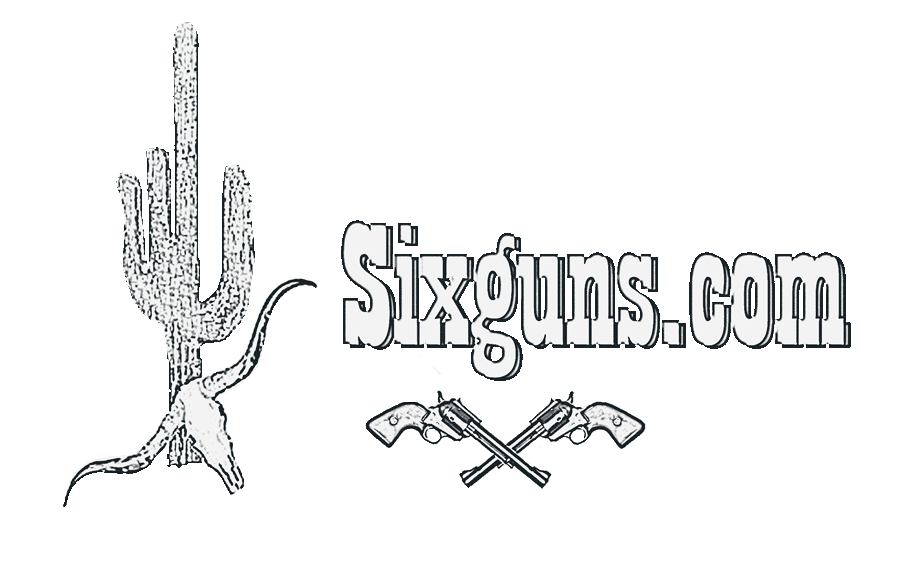
Single Action 1st Generation-chap. 6
Single Action 1st Generation-chap. 6
.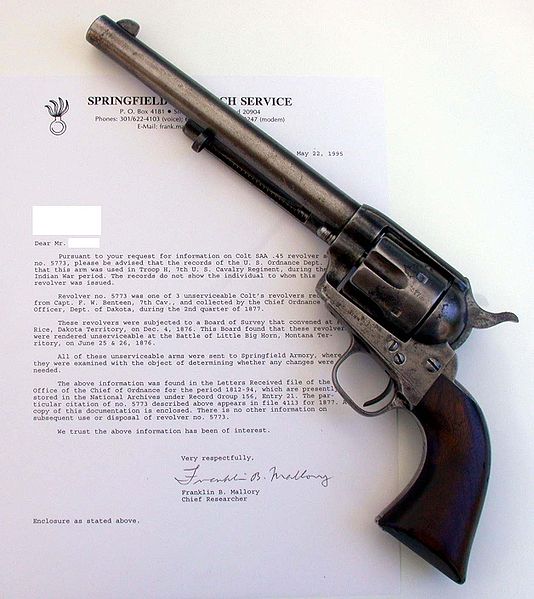
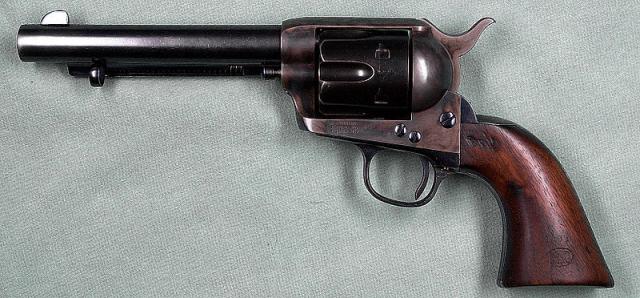
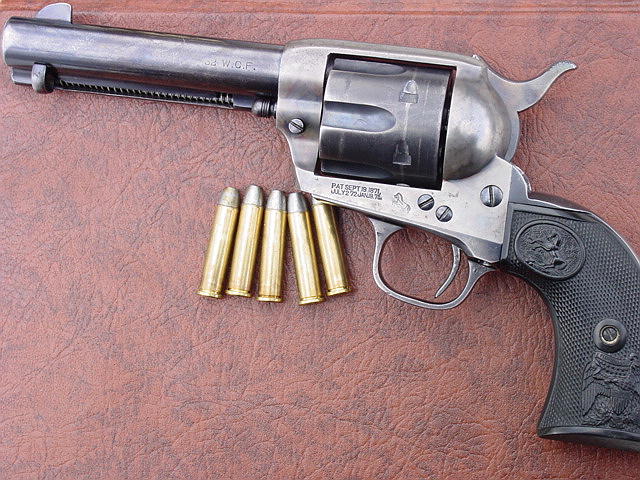
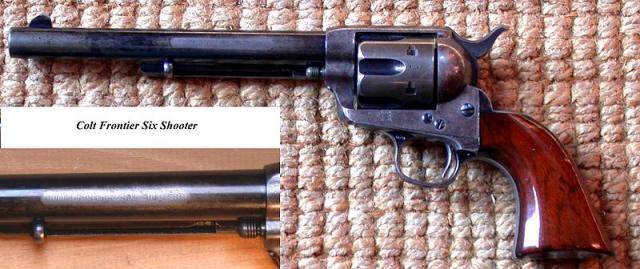
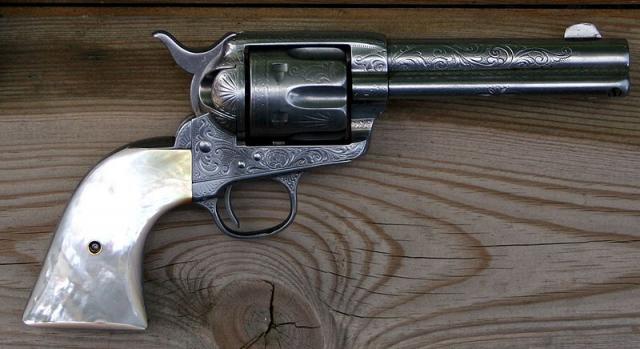
Ist Generation cavalry issue 1874 Colt by Hmaag- wikipedia
1873 Colt Artillery Model by Hmaag-wikipedia
1st Generation Colt SA by Mike Cumpston-wikipedia
Colt Frontier Six Shooter- 1882- by Hmaag-wikipedia
1893 Colt factory engraved by Cuno Helfricht-by Hmaag-wikipedia